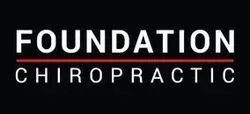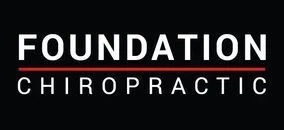Can Zinc help you fight the Coronavirus?
- posted: Jul. 23, 2020
Zinc is an essential mineral that can be found in numerous food sources. It has long been known to be linked to decreased immune function when you are deficient (1,2). It is most important to observe that those most at risk for complications due to coronavirus tend to be the ones most deficient in Zinc. One study estimated that 35%–45% of adults aged 60 years or older had zinc intakes below the estimated average requirement of 6.8 mg/day for elderly females and 9.4 mg/day for elderly males. When the investigators considered intakes from both food and dietary supplements, they found that 20%–25% of older adults still had inadequate zinc intakes (6).
Increasing intracellular Zinc has been the focus of research and even the recommendation for treating patients with coronavirus in Korea and China (3,4,5). However, a great deal of research still needs to be done as far as how to get Zinc into cells and how much Zinc should be taken. It cannot be said conclusively yet that Zinc will help with coronavirus. However it can be said that those with Zinc deficiencies are at a greater disadvantage to fighting off infections. Therefore, it would be wise to ensure that you are not Zinc deficient.
Below is the table for recommendations of Zinc intake (7) (Table 1):
| Age | Male | Female |
|---|---|---|
| 0 to 6 months | 2 mg | 2 mg |
| 7 to 12 months | 3 mg | 3 mg |
| 1 to 3 years | 3 mg | 3 mg |
| 4 to 8 years | 5 mg | 5 mg |
| 9 to 13 years | 8 mg | 8 mg |
| 14 to 18 years | 11 mg | 9 mg |
| 19+ years | 11 mg | 11 mg |
Below is the table for food sources for Zinc (8) (Table 2):
| Food | Milligrams (mg) per serving |
|---|---|
| Oysters, cooked, breaded and fried, 3 ounces | 74.0 |
| Beef chuck roast, braised, 3 ounces | 7.0 |
| Crab, Alaska king, cooked, 3 ounces | 6.5 |
| Beef patty, broiled, 3 ounces | 5.3 |
| Lobster, cooked, 3 ounces | 3.4 |
| Pork chop, loin, cooked, 3 ounces | 2.9 |
| Baked beans, canned, plain or vegetarian, ½ cup | 2.9 |
| Breakfast cereal, fortified with 25% of the DV for zinc, 1 serving | 2.8 |
| Chicken, dark meat, cooked, 3 ounces | 2.4 |
| Pumpkin seeds, dried, 1 ounce | 2.2 |
| Yogurt, fruit, low fat, 8 ounces | 1.7 |
| Cashews, dry roasted, 1 ounce | 1.6 |
| Chickpeas, cooked, ½ cup | 1.3 |
| Cheese, Swiss, 1 ounce | 1.2 |
| Oatmeal, instant, plain, prepared with water, 1 packet | 1.1 |
| Milk, low-fat or non-fat, 1 cup | 1.0 |
| Almonds, dry roasted, 1 ounce | 0.9 |
| Kidney beans, cooked, ½ cup | 0.9 |
References:
- Zinc and immune function: the biological basis of altered resistance to infection. A H Shankar, A S Prasad . Am J Clin Nutr. 1998 Aug;68(2 Suppl):447S-463S.
- Human Health: Effect of Zinc on Immune Cells. Ananda S Prasad. Mol Med. 2008 May-Jun; 14(5-6): 353–357.
- http://www.koreabiomed.com/news/articleView.html?idxno=7428 Opens in new window
- Zn(2+) inhibits coronavirus and arterivirus RNA polymerase activity in vitro and zinc ionophores block the replication of these viruses in cell culture. te Velthuis AJ et. al. PLoS Pathog. 2010 Nov 4;6(11):e1001176. doi: 10.1371/journal.ppat.1001176.
- Human Health: Effect of Zinc on Immune Cells. Ananda S Prasad. Mol Med. 2008 May-Jun; 14(5-6): 353–357.
- Mineral intakes of elderly adult supplement and non-supplement users in the third national health and nutrition examination survey. Ervin RB1, Kennedy-Stephenson J. J Nutr. Opens in new window 2002 Nov;132(11):3422-7.
- Institute of Medicine, Food and Nutrition Board. Dietary Reference Intakes for Vitamin A, Vitamin K, Arsenic, Boron, Chromium, Copper, Iodine, Iron, Manganese, Molybdenum, Nickel, Silicon, Vanadium, and Zinc. Washington, DC: National Academy Press, 2001
- U.S. Department of Agriculture, Agricultural Research Service. FoodData Central Opens in new window, 2019.
Our Location
Foundation Chiropractic
1118 Outlet Collection Way #101
Auburn, WA 98001

